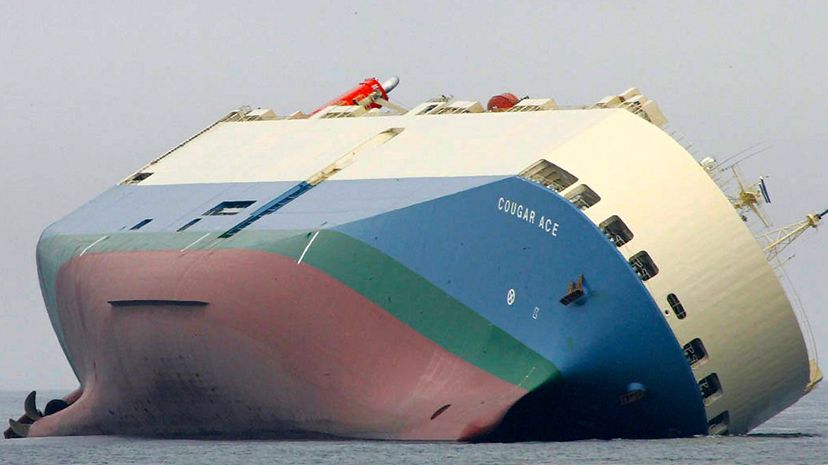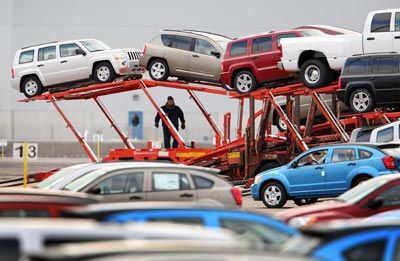
When you think of car disasters, you probably think of horrible crashes or even models that were duds. (Sometimes a disaster means both.) But on this episode of CarStuff, Ben Bowlin and Scott Benjamin bring us the story of an auto disaster that's a little outside the box — or the cargo ship, as the case may be.
The Cougar Ace may sound like a "Top Gun"-worthy nickname, but it's actually the name of a car carrier ship built in Japan in 1993. And it's worth pointing out that it wasn't a middling player. The Cougar Ace set a Canadian record for delivering 5,214 cars to a port in 2005 on a single trip. So in July 2006, when the ship was lumbering toward the West Coast of North America to deliver more than 4,800 vehicles — 4,703 of which were brand-new Mazdas — no one was particularly worried that the 55,328-metric ton (60,989-ton) ship wasn't up to the task.
Advertisement
But just as the ship was reaching North American waters near the Aleutian Islands, a routine practice went very much awry. Ships entering U.S. waters have to purge seawater from the ballast tanks that keep ships level; they do this in order to ensure that no foreign or invasive marine species enter the ecosystem. But for reasons not entirely clear, when the tanks were purged, the crew didn't let in fresh seawater to counterbalance the weight lost. And so the behemoth promptly keeled to the port side, where it bobbed sideways in the water.
The crew was lucky; of the 23 workers, only one suffered a broken leg. Within 24 hours, the crew was evacuated. But that still left a 655-foot ship, containing thousands of cars now hanging from taut straps, floating on its side in the ocean. A salvage crew was called in, and Marty Johnson, a naval architect, created a detailed plan and calculations to right the ship. Unfortunately, on July 31, 2005, Johnson was killed while surveying the ship and suffering a fall.
By August, however, the crew had put Johnson's plan into action and pumped water in to slowly right the ship. Through September, the ship was towed to Portland and the cars — only 68 of which had suffered any damage — were offloaded onto 50 acres (20 hectares) of empty lots. Where they sat ... and sat.
Because Mazda had no idea what to do with the cars. Nobody wanted a "shipwreck" car, and Mazda wasn't about to put the cars on the road: The company had done some testing and determined that, well, it's hard to determine damage on cars hanging from nylon straps at odd angles for long periods.
So for months, workers painstakingly took apart the cars to ensure that every single part was destroyed, never to see a roadway. That meant deploying every airbag, draining every fluid, collecting every nut and bolt, and then feeding each flattened car into the Texas Shredder, a behemoth designed to pound cars into pieces of metal no bigger than a handful.
To learn more about the Cougar Ace and other stories of the car-eating sea, listen to this episode of CarStuff with Ben and Scott.
Advertisement
